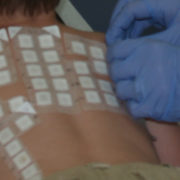New Today – 10 years in collaborative effort! The inaugural data paper from the Pediatric Contact Dermatitis Registry (PCDR). In the not too distant past it was believed that contact dermatitis (allergic) in children was rare, we now know that not to be the case as in fact it is an common in patch tested children as adults. This study discusses the evaluation of more than 1000 US children who presented for evaluation of contact dermatitis. The reported here through a collaborative effort of more than 80 providers! 65% of the cases had a positive allergen and 48% were able to find at least on relevant source – remove the allergen and improve the dermatitis!!!
Goldenberg A1, Mousdicas N, Silverberg N, Powell D, Pelletier JL, Silverberg JI, Zippin J, Fonacier L, Tosti A, Lawley L, Wu Chang M, Scheman A, Kleiner G, Williams J, Watsky K, Dunnick CA, Frederickson R, Matiz C, Chaney K, Estes TS, Botto N, Draper M, Kircik L, Lugo-Somolinos A, Machler B, Jacob SE. Pediatric Contact Dermatitis Registry Inaugural Case Data. Dermatitis. 2016 Sep-Oct;27(5):293-302.
Abstract
BACKGROUND:
Little is known about the epidemiology of allergic contact dermatitis (ACD) in US children. More widespread diagnostic confirmation through epicutaneous patch testing is needed.
OBJECTIVE:
The aim was to quantify patch test results from providers evaluating US children.
METHODS:
The study is a retrospective analysis of deidentified patch test results of children aged 18 years or younger, entered by participating providers in the Pediatric Contact Dermatitis Registry, during the first year of data collection (2015-2016).
RESULTS:
One thousand one hundred forty-two cases from 34 US states, entered by 84 providers, were analyzed. Sixty-five percent of cases had one or more positive patch test (PPT), with 48% of cases having 1 or more relevant positive patch test (RPPT). The most common PPT allergens were nickel (22%), fragrance mix I (11%), cobalt (9.1%), balsam of Peru (8.4%), neomycin (7.2%), propylene glycol (6.8%), cocamidopropyl betaine (6.4%), bacitracin (6.2%), formaldehyde (5.7%), and gold (5.7%).
CONCLUSIONS:
This US database provides multidisciplinary information on pediatric ACD, rates of PPT, and relevant RPPT reactions, validating the high rates of pediatric ACD previously reported in the literature. The registry database is the largest comprehensive collection of US-only pediatric patch test cases on which future research can be built. Continued collaboration between patients, health care providers, manufacturers, and policy makers is needed to decrease the most common allergens in pediatric consumer products.
Full free access to the article for 30 days:
http://journals.lww.com/dermatitis/Abstract/2016/09000/Pediatric_Contact_Dermatitis_Registry_Inaugural.10.aspx


